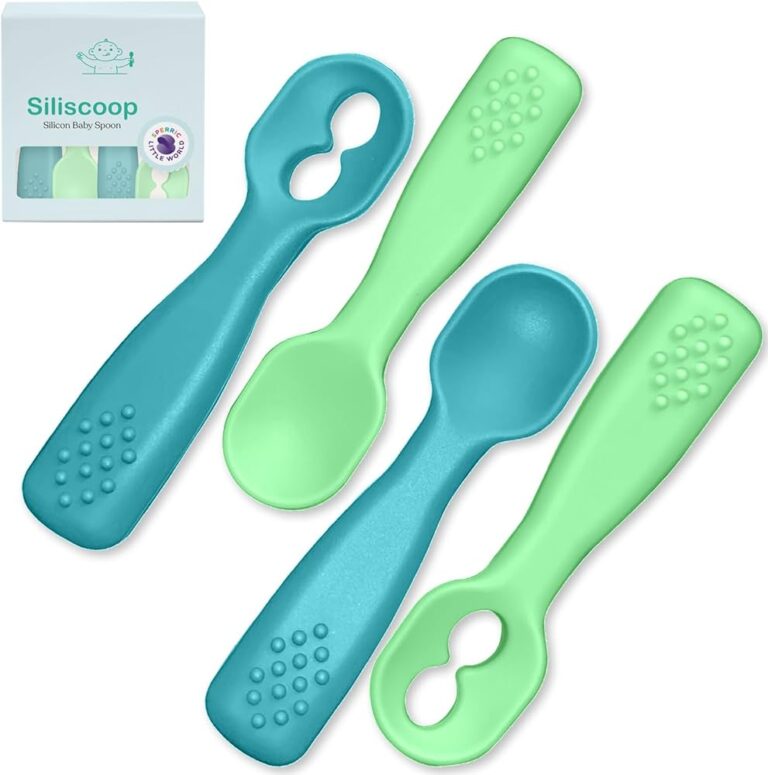How to Stop Baby Clicking When Bottle Feeding: Effective Solutions
To stop baby clicking when bottle feeding, ensure a proper latch and positioning, as clicking can occur when there is a loss of suction.
Understanding The Clicking Sound
Is your baby making a clicking sound while bottle feeding? This could be a sign of a tongue tie or incorrect latching. You can try adjusting the latch or seeking professional help to stop the clicking and ensure a proper feeding experience for your baby.
What Causes The Clicking Sound During Bottle Feeding?
Understanding why your baby is making a clicking sound during bottle feeding is crucial for addressing the issue. The clicking sound is often associated with a poor latch or incorrect tongue movement while sucking. When the baby’s tongue does not create a proper seal around the nipple, it can break the suction and result in the clicking noise.
Exploring The Common Signs Of A Tongue Tie
Tongue tie is a condition where the baby’s tongue is attached to the floor of the mouth by a tight band of tissue, limiting its range of motion. One of the more common signs of a tongue tie is when the baby clicks while feeding. This occurs because the tongue struggles to maintain an effective latch, leading to the clicking sound during bottle feeding. If you suspect your baby has a tongue tie, it’s important to consult a healthcare professional for evaluation and potential treatment.
Understanding The Relationship Between The Jaw Movement And Clicking
The clicking sound during bottle feeding can also be influenced by the movement of the baby’s jaw. When the baby’s jaw moves down, away from the target (breast or bottle), it can cause the seal between the tongue and the nipple to break, resulting in the clicking noise. Ensuring proper jaw movement is essential for preventing clicking and promoting a secure latch.
One technique that can help improve your baby’s latch is to use their natural sucking reflex. Begin by lightly touching your baby’s lips with the bottle nipple, then roll the nipple gently into their mouth. This technique can encourage proper tongue movement and create a better seal, reducing the likelihood of clicking during bottle feeding. However, if the clicking sound persists or if you suspect a tongue tie, it is recommended to seek professional guidance to address the issue effectively.
Correcting The Latch
Is your baby making a clicking sound when bottle feeding? This can be a sign that your baby is not latched correctly. To stop the clicking, try using a technique that encourages proper latch, such as touching your baby’s lips with the bottle nipple and rolling it into their mouth.
Correcting the Latch One common issue that parents may encounter when bottle feeding their babies is the clicking sound that their little ones make during feeding. This clicking sound can be a sign of an incorrect latch, which may lead to discomfort for both the baby and the parent. In this section, we will explore the importance of proper latching for bottle feeding and provide step-by-step techniques to improve your baby’s latch.Importance Of Proper Latching For Bottle Feeding
Achieving a proper latch is crucial for successful bottle feeding. A correct latch ensures that your baby is effectively extracting milk from the bottle and helps to prevent issues such as excessive air intake and discomfort during feeding. When your baby has a proper latch, they can create a seal around the bottle nipple, allowing them to control the flow of milk and minimize the chances of swallowing air. This not only reduces the risk of colic and gas but also promotes better digestion for your little one.Steps To Achieve A Correct Latch For Your Baby
Correcting the latch may require a few simple adjustments. Follow these steps to help your baby achieve a proper latch during bottle feeding:- Positioning: Start by positioning your baby in a comfortable and upright position. Ensure that their head and neck are properly supported using a nursing pillow or your arm.
- Bottle Angle: Hold the bottle with a slight tilt, allowing the milk to fill the nipple and provide a continuous flow. This angle helps prevent excessive air intake and reduces the likelihood of your baby clicking.
- Nipple Placement: Gently touch your baby’s lips with the bottle nipple to stimulate their natural rooting reflex. Then, with a firm touch, roll the nipple into their mouth, allowing them to take a wide mouthful of the nipple as they latch on.
- Check Latch: Once your baby is latched onto the bottle nipple, check to ensure their lips are flanged outward and their mouth is wide open. The baby’s lips should cover a large portion of the areola of the nipple, similar to how they would latch onto a breast.
- Watch for Comfort: Throughout the feeding, pay attention to any signs of discomfort from your baby, such as clicking sounds or frequent breaks during feeding. If you notice these signs, gently remove the bottle nipple and reposition your baby to achieve a better latch.
Using Techniques To Improve Your Baby’s Latch
- Breastfeeding Assistance: If you are also breastfeeding your baby, consult with a lactation consultant for guidance on positioning and latching techniques. The principles of proper latch for breastfeeding can also be applied to bottle feeding.
- Choosing the Right Nipple: Different bottles come with different nipple shapes and flow rates. Test different nipple shapes to find one that best suits your baby’s latch style. A nipple with a wider base may help promote a better latch for some babies.
- Seek Professional Help: If you are struggling to correct the latch despite trying various techniques, it’s advisable to seek the guidance of a pediatrician or lactation consultant. They can assess the issues and provide personalized recommendations for your baby’s latch.
Addressing Tongue-tie Issues
Bottle feeding is an essential part of nurturing your baby, but it can be challenging when your little one starts to make clicking sounds. One possible cause of this clicking is tongue-tie, a condition where the lingual frenulum (the tissue that connects the tongue to the floor of the mouth) is too tight, restricting the tongue’s movement. In this section, we will explore how tongue-tie can contribute to clicking during bottle feeding and discuss the tongue-tie release procedure’s impact on reducing this issue. We will also provide tips for managing flow and vacuum after a tongue-tie release, helping you ensure a comfortable feeding experience for your baby.
How Tongue-tie Can Contribute To Clicking During Bottle Feeding
When a baby has tongue-tie, the limited movement of the tongue can lead to difficulties during feeding. The tight lingual frenulum interferes with the baby’s ability to create a proper seal around the bottle nipple, resulting in air intake and a clicking sound. As the jaw moves down, away from the bottle, the seal between the tongue and the nipple is broken, causing the clicking sound to occur.
Tongue-tie Release Procedure And Its Impact On Clicking
Releasing the tongue-tie through a minor surgical procedure called frenectomy can help resolve clicking issues during bottle feeding. The procedure involves cutting the tight lingual frenulum to increase the tongue’s range of motion, allowing the baby to latch onto the bottle nipple more effectively. By releasing the restriction, the baby can achieve a better seal on the nipple, reducing the chances of air intake and minimizing clicking sounds.
Managing Flow And Vacuum After Tongue-tie Release
After the tongue-tie release, it is important to manage the flow of milk and the vacuum created during bottle feeding. Babies often need time to adjust to the increased tongue movement they now have. Ensuring a proper latch and maintaining a steady flow can help them establish a more comfortable feeding pattern.
Here are some tips to manage flow and vacuum after tongue-tie release:
- Choose an appropriate nipple size for your baby’s age and feeding abilities. A slow-flow nipple can minimize the chances of excessive milk flow and reduce the need for the baby to gulp or make clicking sounds.
- Hold the bottle in a slightly elevated position to allow gravity to assist with the flow, reducing the baby’s effort in creating a seal and minimizing the clicking.
- Take breaks during feeding to give your baby an opportunity to rest and swallow. This can prevent the build-up of excess vacuum and reduce the likelihood of clicking.
- Observe your baby’s latch and positioning. Ensure that the baby’s mouth covers a significant portion of the areola, creating a tight seal. This can promote proper suction and reduce clicking.
By following these strategies, you can help your baby adjust to the increased tongue mobility after tongue-tie release, improve their latch, and minimize clicking during bottle feeding.
Techniques To Improve Bottle Feeding
Learn techniques to improve bottle feeding and stop your baby from clicking. Clicking during feeding can be a sign of a poor latch or weak tongue strength. Take steps to ensure proper positioning, latch, and tongue movement to make bottle feeding a comfortable and effective experience for your baby.
Introducing Paced Bottle Feeding To Minimize Clicking
If your baby is making a clicking sound while bottle feeding, it could be a sign that they are not getting a proper latch or struggling with the flow of milk. One technique that can help improve bottle feeding is paced bottle feeding. This method involves mimicking the natural breastfeeding process by controlling the flow of milk and allowing your baby to feed at their own pace.
Here are some tips for introducing paced bottle feeding:
- Hold the bottle in a more horizontal position, ensuring that the nipple is filled with milk but not overflowing.
- Encourage your baby to take breaks during feeding by gently withdrawing the bottle and giving them a chance to rest.
- Observe your baby’s cues for hunger and fullness and respond accordingly. Don’t force them to finish the entire bottle if they are showing signs of being full.
- Use slow-flow nipples that require your baby to work a bit harder to get milk, preventing them from gulping or choking.
- Allow your baby to actively suck and pause during feeding, mimicking the natural rhythm of breastfeeding.
Tips For Finding The Right Bottle And Nipple For Your Baby
Finding the right bottle and nipple for your baby can make a significant difference in their bottle feeding experience. Here are some tips to help you choose the best options:
- Consider the shape and size of the bottle. Some babies prefer wider bottles that mimic the shape of a breast, while others may prefer narrower bottles with a more traditional shape.
- Pay attention to the nipple flow. Newborns or babies who are struggling with bottle feeding may benefit from a slower flow nipple to prevent them from taking in too much milk at once.
- Try different nipple materials. Some babies may have a preference for silicone nipples, while others may prefer latex. Experiment with different materials to see what works best for your baby.
- Look for bottles with anti-colic features. These can help reduce the amount of air your baby swallows while feeding, minimizing discomfort and potential clicking sounds.
- Ask for recommendations from other parents or consult with a healthcare professional who can provide guidance based on your baby’s specific needs.
Techniques To Help Your Baby Establish A Better Latch On The Bottle
Establishing a proper latch on the bottle is crucial for successful feeding and minimizing clicking sounds. Here are some techniques to help your baby establish a better latch:
- Make sure your baby’s mouth is wide open before introducing the bottle. This can help ensure they take in enough of the nipple for a proper latch.
- Hold the bottle at a slight angle, allowing gravity to assist with milk flow while still requiring your baby to actively suck.
- Gently guide the nipple into your baby’s mouth, aiming for the roof of their mouth rather than just the tip of the tongue.
- Encourage your baby to use their lips and tongue to create a seal around the nipple, preventing air from entering and causing clicking sounds.
- Monitor your baby’s latch throughout the feeding and make adjustments as needed. If you notice clicking sounds, pause the feeding and try repositioning the nipple for a better latch.
Remember, every baby is unique, and it may take some trial and error to find the techniques and equipment that work best for your little one. Patience and persistence will go a long way in helping your baby establish a comfortable and successful bottle feeding routine.
Seeking Professional Help
If your baby continues to click while bottle feeding despite trying various techniques, it may be time to seek professional help. Consulting a lactation consultant or pediatrician can provide you with the guidance and support you need to address the clicking issue effectively. Here are a few factors to consider when deciding whether to reach out to a professional:
When To Consult A Lactation Consultant Or Pediatrician
If your baby continues to click while bottle feeding despite trying multiple strategies, it may be beneficial to consult a lactation consultant or pediatrician. These professionals have the expertise to assess your baby’s feeding technique and identify any underlying issues that may be causing the clicking sound. It is especially important to seek professional help in the following situations:
- If the clicking sound persists for more than a few weeks
- If your baby is experiencing discomfort or pain during feeding
- If your baby is gaining weight poorly
- If you are experiencing nipple damage or pain
Additional Support And Resources For Resolving Clicking Issues
In addition to consulting a lactation consultant or pediatrician, there are several resources available that can provide additional support in resolving clicking issues during bottle feeding. Here are a few options you can explore:
- Online support groups and forums where parents share their experiences and tips for addressing clicking issues
- Books and articles written by experts in the field of lactation and infant feeding
- Virtual consultations with lactation consultants or pediatricians who can provide personalized guidance
- Local breastfeeding support groups that offer in-person assistance and advice
Remember, finding the right support and resources can make a significant difference in resolving clicking issues and ensuring a positive feeding experience for both you and your baby.
Understanding The Role Of Tongue Exercises In Improving Latch
Tongue exercises can play a crucial role in improving latch and minimizing clicking during bottle feeding. These exercises help strengthen your baby’s tongue muscles, allowing them to create a better seal around the nipple and reduce the likelihood of clicking. Talk to your healthcare provider or a lactation consultant to learn about specific tongue exercises that can aid in improving your baby’s latch.

Credit: www.pumpstation.com
Frequently Asked Questions On How To Stop Baby Clicking When Bottle Feeding
Why Does My Baby Make A Clicking Sound When I Feed The Bottle?
Babies may make a clicking sound while bottle feeding, which could indicate a tongue tie. Clicking happens when the tongue breaks the seal between the bottle and its target. It often occurs when the jaw moves away from the bottle.
Make sure your baby is latched correctly to prevent clicking.
Why Is My Baby Making A Smacking Sound While Feeding?
Babies may make a smacking sound while feeding if they are not latched correctly. This could be due to a rounded nipple instead of a flattened one when they come off the breast. It’s important to ensure a proper latch for comfortable and efficient breastfeeding.
Why Is My Baby Clicking On The Bottle After Tongue Tie Release?
After tongue tie release, your baby may click on the bottle because they are still learning to manage flow with their newly freed tongue movement. This can create more vacuum and result in the clicking sound. It is important to ensure proper latching and try techniques that utilize your baby’s natural sucking reflex to improve their latch on the bottle.
How Do I Fix My Baby’s Latch On The Bottle?
To fix your baby’s latch on the bottle, try this technique: 1. Gently touch your baby’s lips with the bottle nipple. 2. Roll the nipple into their mouth. This can help improve their latch and prevent clicking sounds during feeding.
Conclusion
If your baby is making clicking sounds when bottle feeding, it may be a sign of a latch issue. Ensure that your baby is properly latched onto the bottle, with the nipple fully in their mouth. Check for signs of a tight jaw or tongue tie, as these can also contribute to clicking.
Experiment with different bottle nipple shapes and flow rates to find what works best for your baby. Remember, patience and persistence are key in resolving this issue and creating a comfortable feeding experience for both you and your baby.







